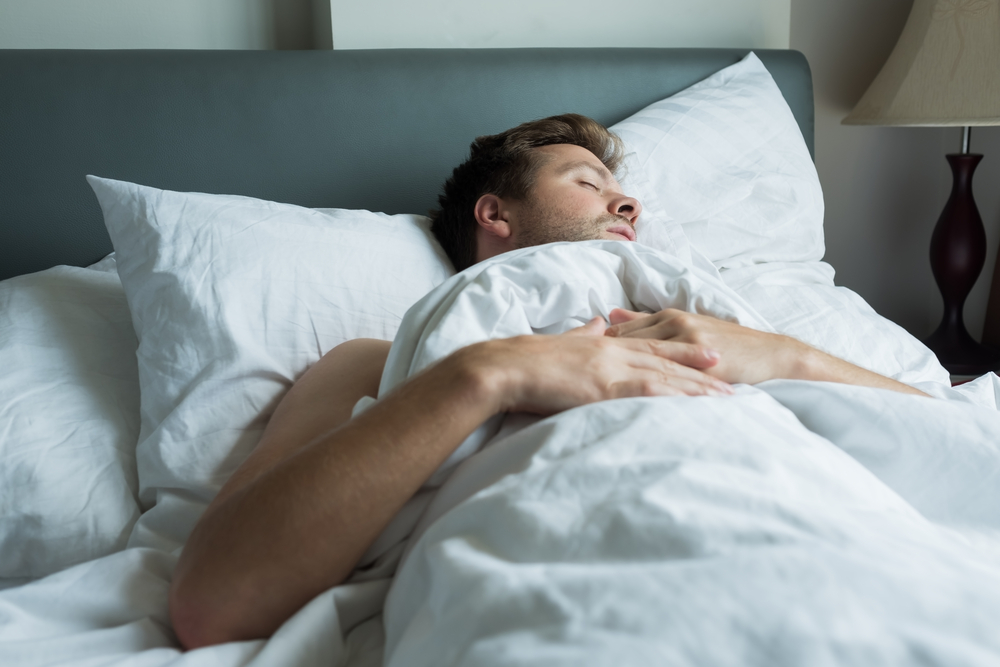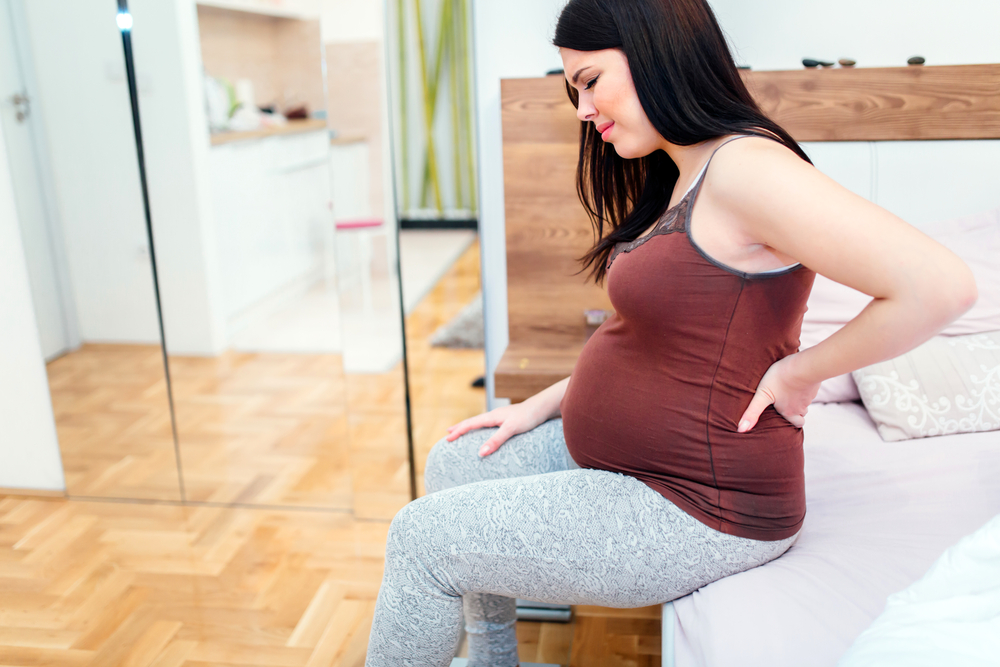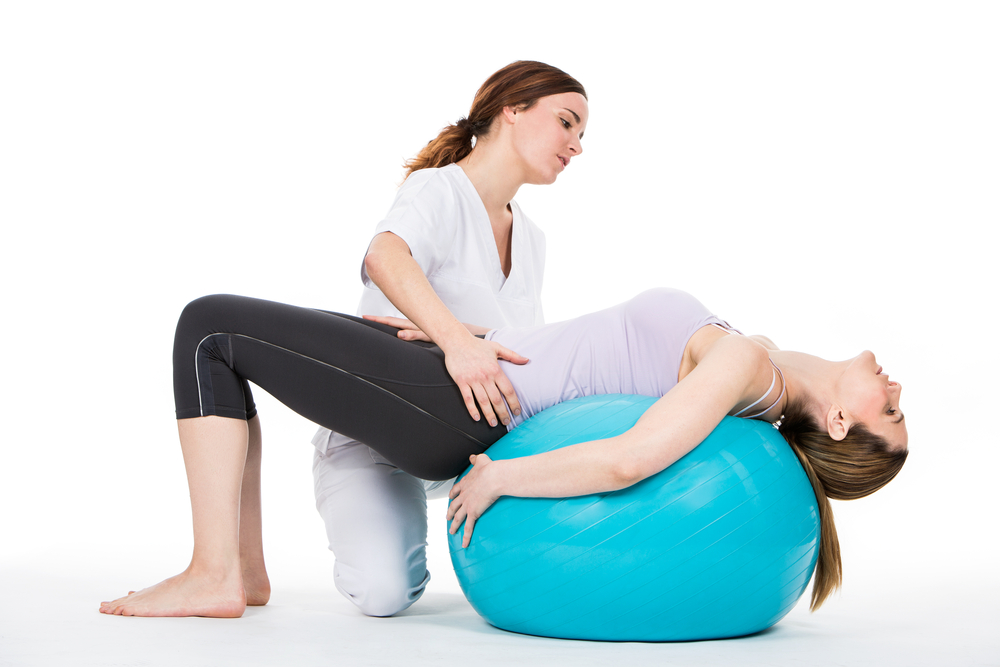What to Do If You Wake Up With Back Pain
Morning back pains can affect your mood and slow down your start of the day. Fortunately, determining the root source of the issue can help you identify ways to manage pain and ways to wake up to pain-free mornings.
This comprehensive guide discusses everything you need to know about waking up with back pain, including the potential causes of pain and their effective treatment options. We'll also go through tips on how to relieve pain and when it's time to book an appointment with your doctor.
How Does Sleep Contribute to Back Pain?
Painful spasms in your back muscles might make it hard to fall asleep and stay asleep. However, lack of sleep can cause morning back pain or even worsen it.
Lack of sleep can heighten pain sensitivity and hinder the brain's ability to properly manage back pain and other painful symptoms. While sleep deprivation won't necessarily increase the amount of back pain you have, it can increase how much back pain you perceive.
Poor sleep also increases inflammation. Inflammation usually gets stirred up in the body when healing from a cut or fighting a virus. If you don't get enough sleep, you'll have overactive immune systems, which means you're generating too much inflammation. This can either cause pain or make your existing condition worse.
Another way sleep deprivation contributes to morning lower back pain is by blocking the effects of pain relievers. Studies show that, for some individuals, not getting enough sleep will lower their pain tolerance and may block the effects of natural pain relievers produced by the brain.
Why Your Sleep Surface Matters
Mattresses generally play a significant role in enhancing sleep quality and controlling how sleepers feel every morning when they wake up. Sleeping on the wrong bed can cause or worsen back pain. Lack of enough support from your mattress can strain your muscles, reinforce poor sleep posture, and cause spinal misalignment, all promoting lower back pain.
Comfort is also sacrificed if your mattress doesn't match your preferences. A bed that offers both back support and comfort helps minimize stress symptoms and lower back pain, allowing your spine and other body parts to rest and rejuvenate at night.
While you can remedy this by simply buying a new mattress, it's crucial to recognize whether your mattress is the actual source of pain. In all cases, if an individual is experiencing ongoing pain, they should speak to their doctor and get their advice. There are numerous causes of back pain in the mornings, so it's wise to be extra careful when identifying the potential root cause.
How to Tell Whether Your Old Mattress is Giving You Back Pain
As mentioned earlier, morning back pain has many different causes, so it can be a bit challenging to pinpoint where your pains are coming from. Fortunately, there are some signs to look out for to check whether your sleep surface is to blame. The first sign is when your pain occurs. If you experience pain around your back region when you wake up, but you can easily relieve the pain within 15-30 minutes by stretching, your bed might be doing more harm than good.
Plus, if your current mattress is no longer comfortable or it sags visibly in the middle, making you toss and turn in bed trying to fall asleep, it might be time to purchase a new one.
Note: Even if your bed is relatively new, it might not fit your unique needs or sleeping posture perfectly. It could be too soft or too firm to offer adequate body support and pressure relief. A medium-firm bed relieves lower back pain more effectively than a firm mattress.
Other Causes of Back Pain in the Morning
You might be experiencing back pain when you wake up in the morning for numerous reasons. Below are some of the environmental and medical causes of lower back pain:
Poor Sleeping Positions

If you notice morning back pain every time you wake up, your sleep position could be the culprit. Poor sleep posture can exert pressure on the spine and cause its natural curve to flatten. This could also strain your back and put uncomfortable pressure on the joints.
You may easily twist your neck region out of alignment if you're a strict stomach sleeper. And depending on your bed's firmness level, your abdomen may also sink deep into the surface, uncomfortably the back out of alignment. To prevent this misalignment, consider changing your sleeping position.
Doctors often recommend side or back sleeping with a pillow beneath the knees to relieve spinal pressure. If you can only sleep comfortably on your stomach, place a pillow under your lower abdomen or pelvis for support.
Poor ergonomics
A sleeper's ergonomics, such as bad posture while exercising or working, can expose the back region to repetitive stress. The buildup of continuous strain can lead to additional painful symptoms that worsen during the night when you're still.
Underlying Medical Condition
If you've tried solving potential environmental factors contributing to low back pain with little to no success, your pain symptoms might be occurring due to a medical condition. It might be time you make an appointment with your healthcare provider for a diagnosis and a viable treatment plan.
There are numerous medical conditions that can cause morning back pain, including:
Degenerative Disc Disease
Despite its name, disc degeneration isn't a disease but a natural result of aging. It occurs when the spinal discs between the vertebrae of your spinal column dry out and start to deteriorate.
This can cause pain and discomfort that may worsen in the morning. For some people, this age-related condition happens with minimal pain. Being overweight can exacerbate degenerative disc disease and any associated low back pain.
Treatment for disc degeneration may include pain medication or steroid injections to relieve pain. Your physician may also suggest heat therapy or wearing a back brace for support.
Fibromyalgia
Fibromyalgia is a chronic disorder that causes musculoskeletal pain, fatigue, mental distress, and trouble sleeping. This condition amplifies pain by affecting how the brain processes pain signals. Symptoms often start after a triggering event, such as surgery, psychological stress, or physical trauma.
Other symptoms associated with fibromyalgia include:
- Altered moods
- Tension headaches
- Anxiety
- Irritable bowel syndrome
While there's no cure for fibromyalgia, doctors can help you manage these symptoms and improve sleep. Treatment involves a combination of exercises and medications. Your healthcare provider may also recommend counseling or therapy to help you cope with this disorder.
Spinal Stenosis
Spinal stenosis occurs when spaces in your spine narrow, creating pressure on your nerve roots and spinal cord. This, in turn, causes pain in the lower back and other parts of the body, depending on the position of the narrowing in the spine. Other symptoms include numbness and weakness around the legs.
This medical condition can be caused by arthritis in the spine, bone disease, or, in rare cases, tumors. Although this condition is more common in older adults, it can also affect young patients, especially those with spinal injuries.
Treatment for this condition usually depends on the state of your symptoms. Your doctor might prescribe antidepressants, opioids, and nonsteroidal anti-inflammatory drugs. Physical therapy can also help maintain the flexibility of your spine and improve your balance.
Herniated Disc

A herniated disc is an issue with one of the discs found between the bones that stack to make the spine. A spinal disc features a soft, jelly-like center covered in a tougher, rubbery exterior. Also known as a ruptured disc or slipped disc, a herniated disc occurs when the jelly-like center of the lumbar disc breaks through the outer layer, irritating a nearby nerve root.
Depending on where the ruptured disc is (mainly around the lower back), it can result in numbness, pain, or weakness in your arm or leg. Conservative treatment usually relieves symptoms in most patients within a few days. If the pain persists, your physician might recommend cortisone injections.
Ankylosing Spondylitis
Also known as axial spondyloarthritis, ankylosing spondylitis is an inflammatory disease that can cause the vertebrae in the spine to fuse. This, in turn, makes the spine rigid and can even result in a hunched posture.
Some patients with ankylosing spondylitis experience morning stiffness and severe back pain. Others experience milder symptoms that come and go. While there's no cure for this condition, treatments can lessen painful symptoms and slow the progression of the disease.
Pregnancy

Low back pain is extremely common during pregnancy. Some women may experience pain as early as 2 months into their pregnancy, but it's likely to be an issue between the second and third trimesters. The pain often worsens during sleep, causing discomfort and sleepless nights.
Pair a warm compress on your back and do regular stretching to reduce pain and discomfort. Side sleeping with your knees bent can also help relieve pain and support fetal health. When getting into and out of your mattress, use your leg strength rather than your back muscles to stand up.
Factors to Consider Before Buying a Mattress for Back Pain
Everyone desires a good night's sleep. However, many people often struggle to get that, as they occasionally wake up with backache and a stiff back. Fortunately, sleeping on a quality mattress can help ease these pains.
But with the wide variety of quality beds on the market, choosing one that's right for your needs can be challenging. So many elements come into play, like material, firmness, and size. And if you're struggling with back pain, getting the perfect mattress for pain relief can become even more complicated.
The following guidelines are designed to help you choose the best mattress for sleep comfort and back support.
Mattress Type
The materials and construction will play a significant role in the performance of your mattress. The motion isolation, bounce, temperature regulation, and contouring of your sleep surface will differ for each type of mattress. That said, it's crucial for you to think about your priorities and go for a bed that will best suit your needs.
Choose the Right Thickness
Mattress thickness is something that most shoppers overlook, and they end up purchasing mattresses that make the pain worse. Generally, individuals with back pain should use 6-8 inch mattresses for comfort and maximum body support. When choosing mattress thickness, keep your body type, sleeping position, and bed height in mind.
Look for Back and Spine Support
If you sleep with back pain or are simply looking for a viable solution to improve your sleep, you must buy a quality bed with excellent spine and back support. We often put our back and spine under strain and pressure throughout the day; working out, doing work, lifting things, sitting in a bending position for hours, and so much more.
That's why opting for a mattress that can help promote spinal alignment while offering much-needed body support is essential. Here, you may want to go for a bed with zoned layers that provide extra pushback against the added weight in your hips and lower back.
Get the Right Firmness Level
Firmness level is an essential driver of mattress comfort and supportiveness and is mainly a matter of personal preference. Contrary to popular belief, extra-firm mattresses aren't the best options for back pain sufferers. A medium-firm bed usually offers universal comfort. You can also use a firm mattress that comes with a soft pillow top. A mattress that's too firm or soft will not offer enough comfort and might even exacerbate back pain.
Consider Your Body Temperature
People rarely sleep well when they're hot and sweating, so keeping cool is crucial for rest. If you stay in a hot climatic region or just find your sleep environment hot during the night, choosing a mattress with breathable materials is crucial.
Treatment for Morning Back Pain
If you wake up in the morning with chronic back pain, don't despair. These medications can get you going while minimizing daily pain and discomfort.
Pain Relievers
Nonsteroidal anti-inflammatory drugs, like naproxen, can help relieve occasional back pain. Overuse of these pain medications can cause severe side effects. So, take them only as directed by the pharmacist.
Some sleepers may need opioid medications or prescription-strength nonsteroidal anti-inflammatory drugs to help with pain. Talk to your pharmacist if you're using other medicines, including over-the-counter medications, to avoid overdosing. You may also be given muscle relaxants to ease painful muscle spasms.
Physical Therapy

Your physical therapist can teach you exercises to strengthen your back and abdominal muscles, improve posture and reduce morning pain. They'll also educate you on how to modify body movements during pain episodes to avoid exacerbating pain while continuing to be active.
Sleep Tips for Morning Back Pain Relief
There are many ways of preventing morning back pain. Taking these measures will not only prevent pain altogether but may also reduce the severity of your symptoms if you get injured.
Remember, not sleeping because of pain can make you miss out on vital restorative sleep that your body needs. If you're having a hard time sleeping because of back pain, you may want to try out these tips:
Change Your Sleep Position
Your sleep position can directly impact your sleep quality and the potential for experiencing back pain. While changing your sleep position can be challenging at first, it comes with many health benefits. As mentioned earlier, certain positions can help alleviate pressure from the spine, keeping the neck and spine in a neutral and comfortable position.
This, in turn, helps reduce pain. There are many sleeping styles to manage lower back pain in the morning. Finding a position that works for your needs can help you enjoy a good night's sleep.
Establish a Bedtime Routine
Establishing and following a consistent bedtime routine allows your body to get enough sleep. A bedtime routine simply means a set of activities you do in the same pattern each night before going to bed. These routines can vary depending on personal preference but often include soothing activities like reading, meditation, or taking a warm bath.
Establishing a bedtime routine is a straightforward lifestyle modification that will relax your mind and body before bed. This can help alleviate morning pain and back discomfort while allowing your body to heal and rejuvenate.
Stay Active Throughout the Day

Daily exercise is vital to alleviating pain and improving your sleep quality. Walking is among the best forms of exercise that can be beneficial for relieving pain.
If you're doing an office job that involves sitting for long periods, taking frequent breaks is crucial. That said, stand up, walk around, and stretch at least every 30 minutes or so. Consider placing a pillow behind your back if you're using an unsupportive desk chair.
Stretches and Exercises for Morning Back Pain
One effective way to beat morning back pain is by making it a habit to stretch before getting out of bed. There are numerous stretches you can do right after waking up. For instance, you can sleep on your back and hold your arms above your head as high as possible, with your legs stretching in the opposite direction.
You can also do a lower back stretch by bringing your knees into your chest and holding them for a few seconds before releasing them. While in this position, gently rocking from side to side might also help relieve pain. Once you're done, sit up and then plant your feet on the ground, stretching them out a bit (shoulder-width apart). Stretch your hands over your head, then stretch from one side to the other for an all-over stretch.
Consult your physician before adding these stretches or new exercises to your workout routine. Here are other stretches that can further relieve tension, helping you prepare for the day.
Planks
The primary role of doing planks is to increase your core strength and create a protective effect for the spine. With stronger abdominals, the body can use more of these muscles instead of the back region, which leads to less strain and injury during the day.
To do planks:
- Lie on the floor face down
- Curl your toes and ensure your elbows and forearms align with your wrists
- Lift off the flow, pushing yourself into your upper back and keeping your chin close to the neck
For the best results, hold your plank for 30 to 60 seconds while crunching your abs tight and contracting your glutes and thighs to prevent straining your back.
Knee Bend
You may find back pain relief, especially around your lower back, by stretching the glutes and knees. One effective way of doing this is by performing knee bends.
To do this exercise, squat down as if you want to sit on a chair. Keep the knees bent at a 90-degree angle, ensuring they don't track past the toes. Exhale as you go down, then inhale on your way up. Repeat the process up to 10 times for the best results.
When to Talk to Your Doctor
Lower back pain usually improves on its own after 2 to 4 weeks. Consider speaking with your doctor if you continue waking up with pain after 4 weeks. It's crucial to seek immediate medical attention for severe back pain that interferes with movement and normal activities.
On rare occasions, back pain can be a sign of a serious medical condition. That said, make an appointment with your physician if you have severe morning backaches and you:
- Have previously had cancer
- Are losing weight without trying
- Cannot control your bladder or bowels
- Feel pain when urinating
To make a diagnosis, your doctor will:
- Ask about your symptoms
- Review your medical history
- Conduct a physical examination
A healthcare provider may also recommend various tests to help identify the root cause of back pain. These may include imaging tests like CT scans or nerve conduction studies.
Closing Thoughts
Morning back pain often occurs when you overstrain your body during physical activity or due to poor sleeping habits. However, it can also be a sign of certain medical conditions like spinal stenosis or degenerative disc disease. Consider speaking with your physician if your condition doesn't improve with self-care measures, such as purchasing a new mattress or changing your sleep position. It's also crucial to contact your healthcare provider for severe morning back pain that limits your ability to go about your daily routine.